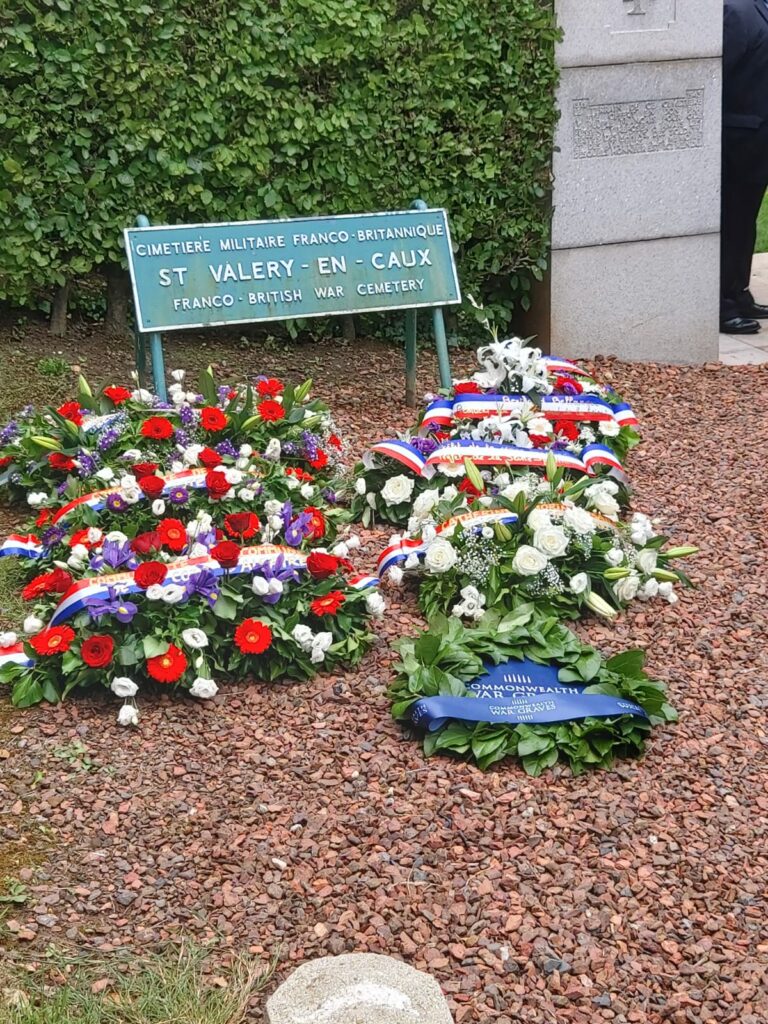
The Commander of 51st Infantry Brigade and HQ Scotland was in Saint Valery-en-Caux to take part in commemorations marking the 82nd anniversary of the battle in northern France.
Brigadier Ben Wrench represented the Brigade on the weekend of 25/26 June, along with a contingent from 7th Battalion The Royal Regiment of Scotland (7SCOTS). The Mayor of St Valery Jean-François Ouvry, and his deputy Benjamin Gorgibus made them very welcome.
Ceremonies took place at both the memorial to The Fighting 51st on the cliffs above the town and at the Franco-British Commonwealth War Graves Commission cemetery. The gates of the cemetery were gifted to St Valery by the people of north and north-east Scotland.
Ceremonies also took place at Veules-les-Roses and many other small towns in the area as local people spared no effort in showing their gratitude and remembrance.
Eighty-two years ago, in June 1940, soldiers of the 51st Highland Division were fighting a valiant rear-guard action against an advancing German army in Normandy.
Alongside soldiers from 1st Armoured Division and the French 9th Army Corps, they fought under French command against huge odds for nearly 10 days until surrounded at the fishing town of Saint Valery-en-Caux.
Highland Division, initially with a complement of 20,000, comprised nine battalions of the Highland infantry regiments. They had been detached from the British Expeditionary Force (BEF) and had escaped encirclement around Dunkirk.
From June 4 they were conducting a fighting withdrawal West from the Somme. The German advance was so rapid that they, and part of the French army, were cut off.
And, so, they found themselves in St Valery under siege from four German divisions determined to prevent another Dunkirk.
Almost out of ammunition – and certainly out of luck – a combination of dense fog and the 7th Panzer Division artillery above the town prevented the awaiting flotilla of more than 200 rescue vessels reaching shore on June 11.
Further resistance and a counter-attack were considered, but with no evacuation possible, no support available and the position hopeless, the most difficult of decisions was taken.
10,000 exhausted men under the command of General Victor Fortune were forced – just before 1000hrs on June 12 – to surrender to the Germans. General Fortune handed his sword to General Erwin Rommel, who would go on to be known as the Desert Fox.
Those who survived the fierce fighting were marched hundreds of miles to Prisoner of War camps in Eastern Europe, where they endured five years of privation until freedom came in the shape of the Russians advancing from the east.
The capitulation had come just days after the successful mass evacuations at Dunkirk, nearly 200 miles to the north.
There was barely a town or village in the Highlands and Islands that wasn’t affected by the losses sustained in France.
It wasn’t, however, the end of the 51st Highlanders – the division was reconstituted from the 9th Highland Infantry Division. It fought at El Alamein in Africa, defeating Rommel and his troops.
Then, in 1944, the Division marched back into St Valery as liberators.












